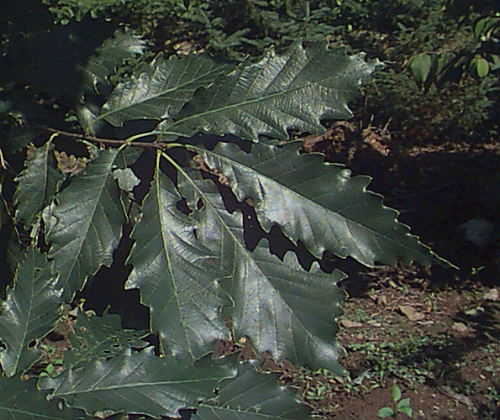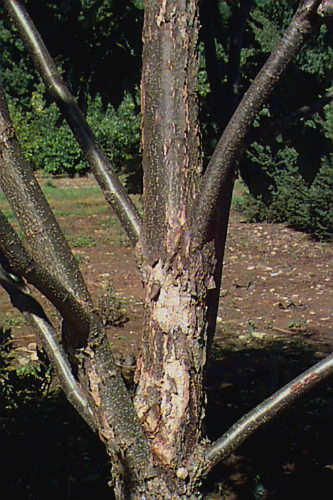Quercus prinus
Chestnut Oak, Basket Oak
Fagaceae
ExpandHabitat
- native to eastern United States
- zone 4
Habit and Form
- a large, deciduous tree
- 60 to 70' tall
- has an irregular spread
- pyramidal when young
- rounded, broad-rounded or upright rounded when mature
- dense crown
- medium texture
- moderate growth rate
Summer Foliage
- alternate leaf arrangement
- simple, deciduous leaves
- leaves are not lobed
- obovate leaf shape
- 4" to 8" long
- coarsely toothed leaf margin
- leaves have a gray pubescent underside
- dark yellow-green leaf color
Autumn Foliage
- yellowish-brown fall color
Flowers
- monoecious
- male flowers are pendulous yellow-green catkins
- blooms in May
- messy
Fruit
- ovoid acorn in pairs on singly
- 1" ti 1.25" long
- involucre covers a third of the nut
- acorn is a rich dark brown color
Bark
- nearly black bark
- deeply furrowed
- ornamentally attractive
Culture
- full sun
- prefers moist, well-drained, acidic soil
- easily transplanted for an oak
Landscape Use
- shade tree
- for large area
- for valuable wood
- one of the most attractive oaks
- long-lived and desirable
Liabilities
- numerous insect and disease pests, but damage is rarely significant
ID Features
- leaves have no lobes
- alternate leaf arrangement
- bark is almost black in color
- imbricate, conical, reddish brown, buds with pubescence
- large acorns
Propagation
- by seed
Cultivars/Varieties
- none

